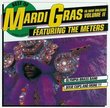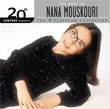| All Artists: Beethoven, Toscanini, NBC Title: Toscanini Collection, Vol. 2 Beethoven: Symphonies Nos. 2 & 7 Members Wishing: 0 Total Copies: 0 Label: RCA Release Date: 1/18/1991 Genre: Classical Styles: Historical Periods, Classical (c.1770-1830), Symphonies Number of Discs: 1 SwapaCD Credits: 1 UPC: 090266025329 |
Search - Beethoven, Toscanini, NBC :: Toscanini Collection, Vol. 2 Beethoven: Symphonies Nos. 2 & 7
 | Beethoven, Toscanini, NBC Toscanini Collection, Vol. 2 Beethoven: Symphonies Nos. 2 & 7 Genre: Classical
|
Larger Image |
CD DetailsSimilarly Requested CDs
|
CD ReviewsCompelling Version Of Sym #2, But #7 Is Inferior Reading 09/26/1998 (4 out of 5 stars) "Vol. 2 of the "official" RCA / BMG Toscanini collection contains the very familiar fifties performances from commercial recording sessions of these two great works; yet for their virtues, these are NOT the best Toscanini readings.The archival disks (once transferred perfectly to LP by Music & Arts) of the Toscanini broadcast of Nov. 4, 1939 containing the Symphony No. 2 must surely represent the conductor's finest available reading on disks (sadly, the Grammophono 2000 edition on CD has added phony stereo and heavy echo, so one must look for the very hard to find Relief CD on CR-1871.) On the present RCA / BMG CD, one finds a composite of recording sessions from Nov. 7, 1949 and Oct. 5, 1951, held in the excellent acoustics of Carnegie Hall. However, the mike placement was about as close as the typical Studio 8-H broadcasts, diminishing the spaciousness and enhancing the intensity (which is further boosted by the audio compression used for the master tapes, which -- at 30 ips original speed -- at least had full and clear highs and rich bass response, though lots of hiss.) Had this recording been taken down with a more conservative, single-point miking from a more distant perspective, with a true dynamic range, the performance might seem more natural and unforced; in the rather 'glamorized' typical RCA engineering showcasing, it has acquired something of the aggressiveness and punchiness that is also shared by many late-forties, early-fifties recordings by Munch, Monteux, Koussevitzky, and Reiner (equally affected by RCA's technical decisions and the producers' engineering tastes.) By contrast, the 1953 "Eroica" contained in Vol. 29 of the series is a model of naturalness, aided not only by engineering but also by the electricity generated at a live concert event. Here, in this Second, we have the "canned" Toscanini enthusiasm, but it is nevertheless a classic recording that has been heard by millions of music lovers, and deserves inclusion in any comprehensive list of historic Beethoven performances.The classic 1936 recording session of the Beethoven Seventh is brilliantly reproduced in Vol. 64 of the RCA / BMG series: the New York Philharmonic performance is a marvel of controlled intensity yet spacious expression, while in this rather dreadfully forced Nov. 9, 1951 recording session with the NBC ensemble (corrected with bits from the live broadcast of Nov. 10) we have one of the most hectic and overstressful performance of all time. The claustrophobic, overamplified engineering (which makes the music sometimes sound as though it will burst apart at climaxes) completes the job, rendering this recording the worst choice of any Toscanini reading of the work. The same basic approach was attempted by the Maestro for the broadcast of Nov. 18, 1939, and there it worked, and reached the very edge of allowable intensity while not going "over the top": in '39, the opening movement lasted 11:20; in '51, it clocked in at a blistering 11:04: those extra seconds were shaved off by means of a stricter approach to scansion, a more precise attention to the values of rests, and less plastic phrasing. Try Relief CR-1885 for the best "in house" sound of the archival source, or the Grammophono CD release for a much inferior, echoey, phony stereo reconstruction: even the latter is preferable to the "authentic" original RCA commercial session of 1951.However, be warned that this original single-channel RCA series will be replaced with a "refurbished" one containing added stereophonic ambience not present in the original recordings. If you love truthful mono, be sure to get the present CD edition!"
|

 Track Listings (8) - Disc #1
Track Listings (8) - Disc #1







